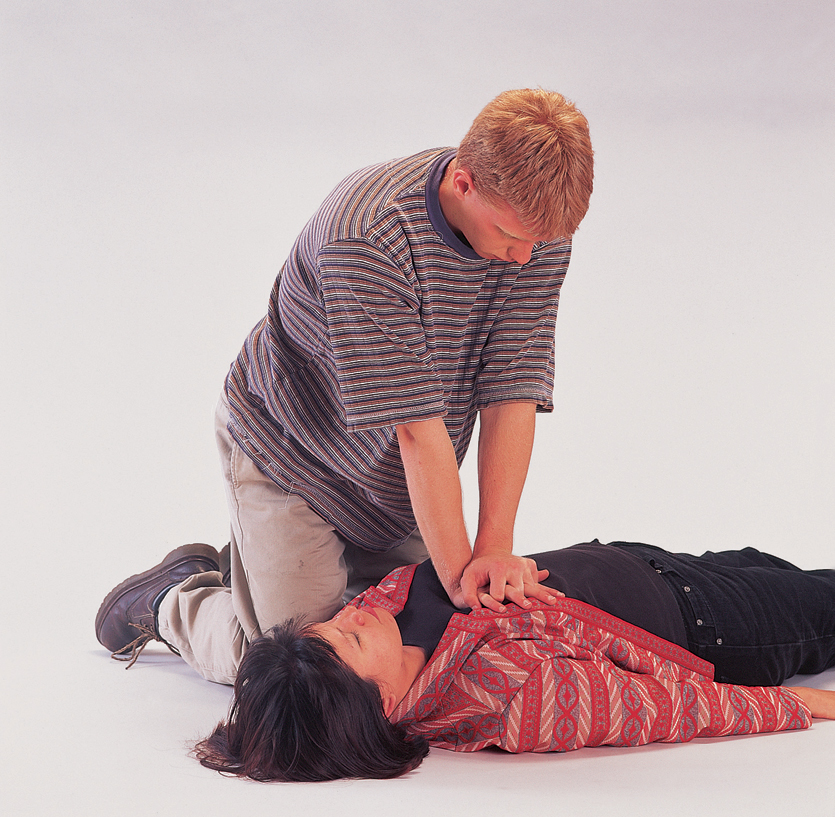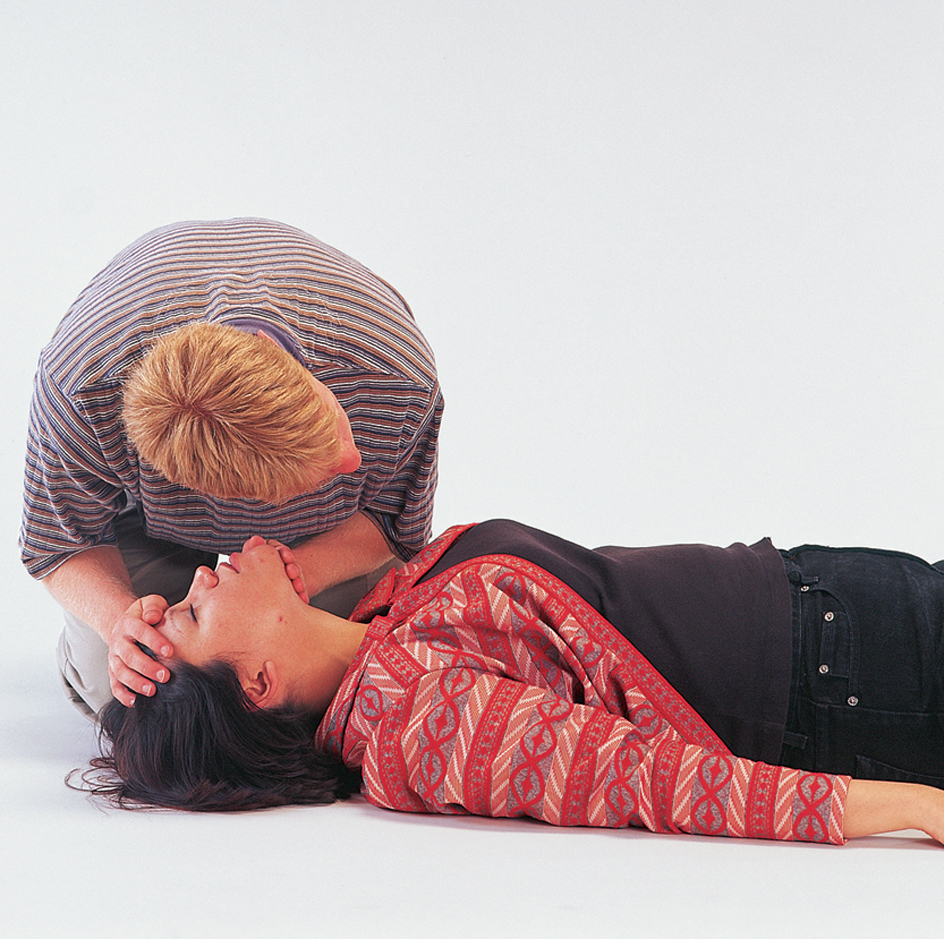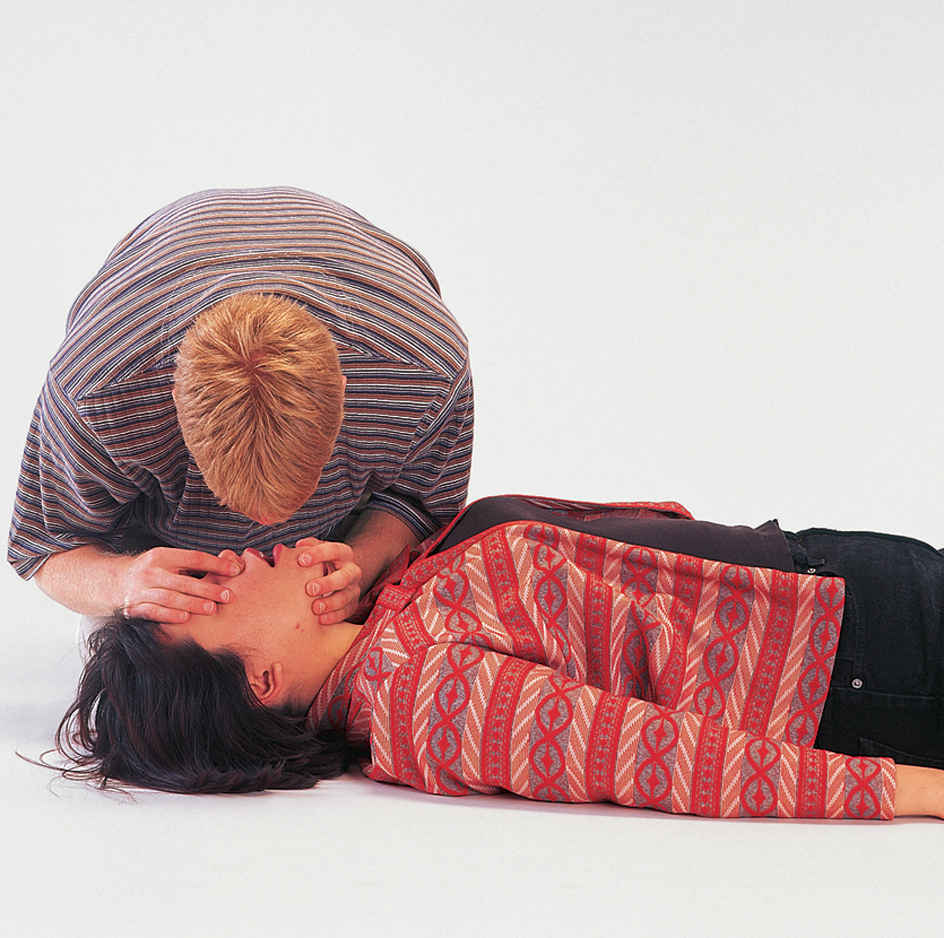Cardiopulmonary resuscitation (CPR) is an emergency first-aid procedure used to deliver oxygen-carrying blood to the heart and brain. It is used on a person whose breathing and heartbeat have stopped. CPR is most often needed after a heart attack causes the heart to stop beating. This condition is called cardiac arrest. People may also go into cardiac arrest and require CPR after serious injury, after nearly drowning, or after a drug overdose. CPR must begin within minutes after breathing and heartbeat have stopped. Rescuers should call for emergency help before beginning CPR.
Medical experts recommend a variation called hands-only CPR for use by people with no CPR training. To administer hands-only CPR, the rescuer first checks to see if the victim is responsive. The rescuer does this by gently shaking the person and asking, “Are you OK?” If the victim does not respond, the rescuer should shout for help and have someone telephone for an ambulance. Next, the rescuer places the victim flat and face up. The rescuer places both hands—one on top of the other—on the lower part of the victim’s sternum (breastbone). The rescuer then presses down about 2 inches (5 centimeters). This action forces blood to flow from the heart to other parts of the body. The pressure is then released, enabling the heart to fill with blood. The rescuer should try to perform about 100 compressions each minute. Rescuers who are not trained in CPR should continue chest compressions until medical help arrives.

Rescuers trained in CPR should continue for about 30 chest compressions. After that, the trained rescuer should open the victim’s airway. If no neck injury is suspected, the rescuer presses down on the victim’s forehead and lifts the chin. This action opens the airway by lifting the tongue and jaw. In an unconscious person, the tongue often blocks the upper airway. When the airway is clear, the victim may resume breathing. If the victim does not begin breathing normally, the rescuer pinches the victim’s nostrils shut. The rescuer takes a deep breath and places his or her mouth over the victim’s mouth. The rescuer blows slowly into the victim’s mouth to inflate the lungs. Then, the rescuer releases the nose, allowing the victim to breathe out. The rescuer gives the victim two breaths in this way.

If the victim has no signs of breathing after two breaths, the rescuer should resume chest compressions and repeat the procedure. This action should be repeated until the victim resumes breathing or help arrives.

Anyone can learn to perform CPR. The Red Cross and Red Crescent and many other organizations offer training courses. Even people with no training can perform hands-only CPR. Untrained rescuers can also be coached through the steps over the telephone by an Emergency Medical Services dispatcher.
See also First aid (Heart attack) .
